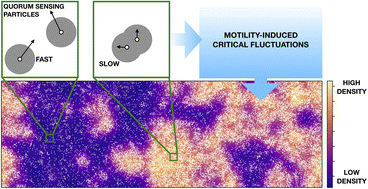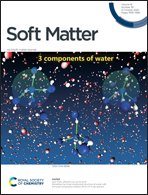Critical behavior of quorum-sensing active particles
Abstract
It is still a debated issue whether all critical active particles belong to the same universality class. Here we numerically study the critical behavior of quorum sensing active particles that represents the archetypal model for interpreting motility-induced phase separation. Mean-field theory predicts that this model should undergo a full phase separation if particles slow-down enough when sensing the presence of their neighbors and that the coexistence line terminates in a critical point. By performing large-scale numerical simulations, we confirm this scenario, locate the critical point and use finite-size scaling analysis to show that the static and dynamic critical exponents of this active system substantially agree with those of the Ising universality class.



 Please wait while we load your content...
Please wait while we load your content...